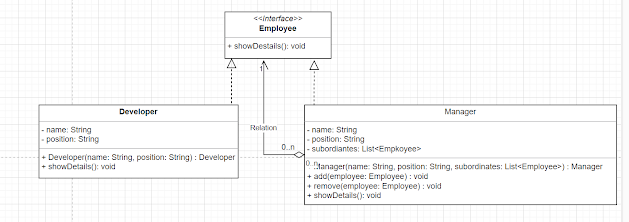Composite Desing Pattern
The Composite Design Pattern is a structural design pattern that allows you to compose objects into tree-like structures and work with them as if they were individual objects. It lets clients treat individual objects and compositions of objects uniformly.
Key Components of the Composite Design Pattern:
Component: It is the common interface or abstract class that defines the operations that can be performed on both leaf and composite objects.
Leaf: It represents the individual objects in the composition. Leaf objects do not have any child objects.
Composite: It represents the container that can hold leaf objects as well as other composite objects. Composite objects have methods to add, remove, and access child objects. They delegate the operations to their child objects recursively.
Benefits of using the Composite Design Pattern:
Transparency: Clients can treat individual objects and compositions uniformly, as they both implement the same interface. The client doesn't need to know whether it is working with a single object or a composite object.
Recursive Structure: The composite structure allows you to create a hierarchy of objects in a recursive manner. You can have compositions of objects, which in turn can contain other compositions or leaf objects.
Flexibility: You can add and remove objects dynamically from the composite structure at runtime without affecting the client code. It allows for easy construction and manipulation of complex object hierarchies.
Simplified Client Code: Clients can interact with the composite structure through a single interface, which simplifies the client code. The client doesn't need to be aware of the internal structure of the composite objects.
Common Use Cases of the Composite Design Pattern:
File System Structure: The composite pattern can be used to represent a file system structure, where directories can contain subdirectories or files.
Organization Hierarchy: The composite pattern can be used to represent an organizational hierarchy, where a manager can have subordinates who can be either individual employees or other managers.
UI Components: The composite pattern can be used in GUI frameworks to represent the structure of user interface components, where containers can hold other components or nested containers.
Overall, the Composite Design Pattern provides a way to create recursive structures of objects and work with them uniformly. It promotes code reuse, flexibility, and simplifies the client code by treating individual objects and compositions of objects in a consistent manner.

Comments
Post a Comment